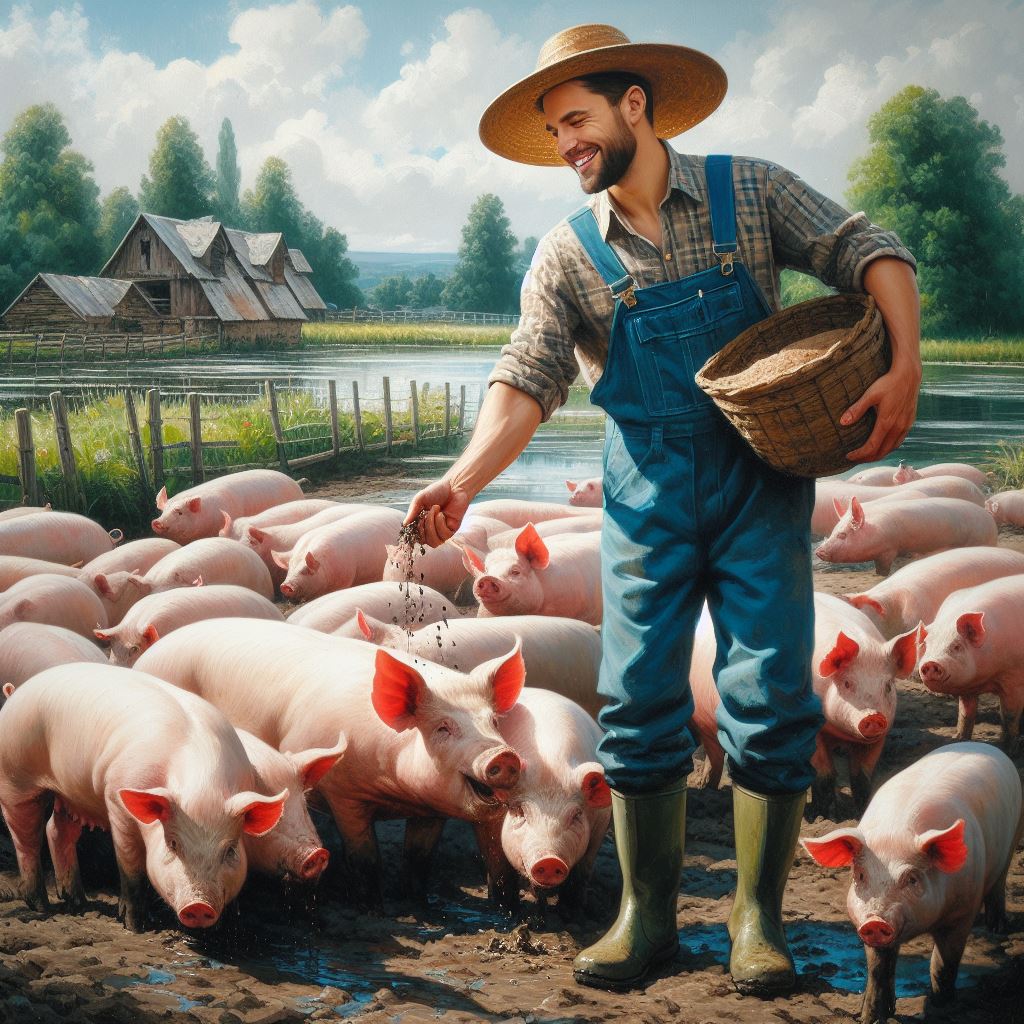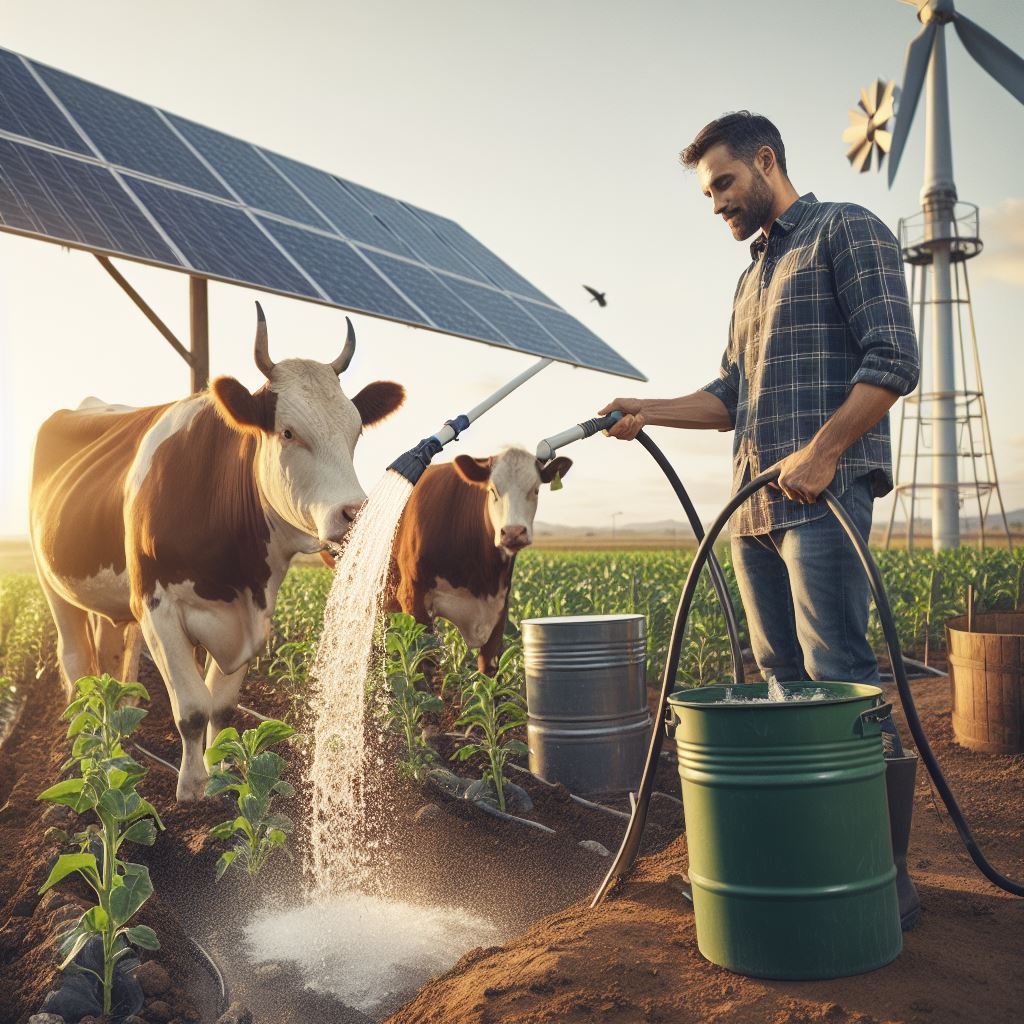Introduction
Climate change has significant consequences for pig farming, leading to various challenges and impacts on the industry.
Rising temperatures can lead to heat stress in pigs, affecting their health, reproduction, and overall productivity.
Extreme weather events, such as floods or droughts, can disrupt feed supply chains and increase the risk of disease outbreaks.
Altered precipitation patterns may impact water availability, crucial for pig farming.
Additionally, changes in temperature and humidity can create favorable conditions for the proliferation of certain pests and diseases, adding to the burden on pig health.
Climate-induced shifts in vegetation and ecosystems may also affect the availability and cost of feed, influencing the economic viability of pig farming.
It is essential to comprehend the effects of climate change on pig farming, as it affects not only the animals but also the overall sustainability of production.
In this blog post, we will explore the objective of providing an overview of the climate impact on pig farming.
By understanding these impacts, farmers, policymakers, and stakeholders can make informed decisions to mitigate the negative effects and adapt to the changing climate.
Climate Factors Affecting Pig Farming
Pig farming is greatly influenced by climate factors, including temperature, precipitation, and humidity.
These factors directly impact the health, growth, and productivity of pigs on the farms. Understanding the effects of these elements is crucial for successful pig rearing.
Temperature
- Maintaining an optimal temperature range is essential for pig rearing. Pigs thrive in temperatures between 18°C and 23°C (64°F and 73°F). This range ensures proper growth, development, and maximum productivity.
- Heat stress is a significant concern for pig farmers, particularly in regions with high temperatures. When exposed to extreme heat, pigs experience discomfort, reduced feed intake, altered behavior, and decreased productivity. Heat stress can also lead to heat stroke, which may be fatal for pigs.
- Extreme temperature fluctuations, such as sudden spikes or drops, can cause stress among pigs. These fluctuations disrupt their thermoregulation and can result in reduced appetite, poor growth, and increased susceptibility to diseases.
Precipitation
- Excessive rains or floods can pose significant challenges for pig farms. Waterlogging can cause muddy conditions, leading to unsanitary living conditions for the pigs. Standing water can also become a breeding ground for pests and diseases, posing a threat to the overall health of the herd.
- Drought conditions, marked by prolonged periods of scarce or no rainfall, can have severe consequences for pig rearing. Water scarcity becomes a major issue, affecting various farm operations. Limited access to water disrupts daily routines, compromises pig health, and hampers hygiene practices.
Humidity
- High humidity levels can cause discomfort and stress among pigs. Pigs are prone to heat stress in hot and humid conditions. This stress affects their ability to regulate body temperature and can lead to reduced feed intake, weight loss, and decreased growth rates.
- Excessive moisture levels in the air can result in respiratory issues for pigs. Increased humidity creates conditions favorable for the growth of bacteria, fungi, and other pathogens. Prolonged exposure to these microorganisms increases the risk of respiratory diseases, such as pneumonia, in pigs.
Therefore, climate factors play a significant role in pig farming. Temperature, precipitation, and humidity directly influence the well-being, growth, and productivity of pigs.
Maintaining optimal conditions within temperature, managing excessive rains or drought, and regulating humidity levels are crucial for successful pig rearing.
By understanding and addressing the impact of climate factors, pig farmers can ensure healthier and more productive pig farms.
Read: Sheep Flock Health: Common Illnesses Guide
Transform Your Agribusiness
Unlock your farm's potential with expert advice tailored to your needs. Get actionable steps that drive real results.
Get StartedDisease and Pathogen Outbreaks in Changing Climate
Increased risk of diseases and infections
The impact of climate change on pig farming goes beyond environmental factors and affects the health of the animals in significant ways.
One of the major concerns for pig farmers is the increased risk of diseases and infections among their livestock.
Warmer temperatures, a consequence of the changing climate, play a critical role in disease transmission among pigs.
With rising temperatures, pathogens thrive and multiply, increasing the likelihood of pigs getting infected.
The warmer environment creates an ideal breeding ground for disease-causing agents to spread within pig populations.
Furthermore, the changing climate enables the spread of new or emerging pig diseases.
As the climate becomes more unpredictable, the geographical distribution of various pathogens expands, leading to the emergence of previously unknown diseases.
These new diseases pose additional threats to pig health, as the animals lack prior exposure and immunity to these pathogens.
Vulnerability to pathogens
In addition to the increased risk of diseases and infections, pigs also become more vulnerable to pathogens in a changing climate.
Environmental changes, such as extreme weather events and shifts in temperature patterns, can weaken the immune systems of pigs.
Pigs exposed to these environmental stressors are more likely to experience compromised immune responses, making them easier targets for infections.
Moreover, there is a higher prevalence of viruses and bacteria in a changing climate, further exacerbating the vulnerability of pigs to pathogens.
Climate change can disrupt the ecological balance and impact the interactions between hosts, vectors, and pathogens.
As a result, there is an increased presence of disease-causing agents, making it more challenging for pig farmers to maintain the health of their livestock.
The combination of weakened immune systems in pigs and the higher prevalence of diseases and infections in a changing climate creates a challenging environment for pig farmers.
Addressing of Challenges
To address these challenges, pig farmers are adopting various measures. They focus on improving biosecurity and hygiene practices to minimize the risk of disease transmission.
This includes implementing strict quarantine protocols for new animals, regularly disinfecting facilities, and properly disposing of waste to prevent the accumulation of pathogens.
Furthermore, proactive veterinary care and monitoring are crucial in identifying and preventing disease outbreaks.
Regular health check-ups, vaccination programs, and early detection systems can help mitigate the impact of pathogens in a changing climate.
Collaboration between farmers, veterinarians, and researchers is also essential to stay updated on emerging diseases and developing effective preventive measures.
Essentially, climate change presents significant challenges in maintaining the health and well-being of pigs in the farming industry.
The increased risk of diseases and infections, as well as the vulnerability to pathogens, necessitates proactive measures from pig farmers.
By prioritizing biosecurity, veterinary care, and collaboration, the industry can adapt to the changing climate and protect both the animals and the livelihoods of farmers.
Read: Swine Flu: Protecting Your Pig Herds
Showcase Your Farming Business
Publish your professional farming services profile on our blog for a one-time fee of $200 and reach a dedicated audience of farmers and agribusiness owners.
Publish Your ProfileYou Might Also Like: Goat Hoof Trimming: A Step-by-Step
Changing Feed and Nutrition Requirements
Altered nutritional needs of pigs in different climates
- Pigs raised in warmer climates require diets with higher energy content and lower protein content.
- High temperatures increase the pigs’ metabolic rate, making it necessary to provide more calorie-dense food.
- Warmer climates also increase water consumption, necessitating the inclusion of more hydration sources in the diet.
- Additionally, pigs in hotter regions may require more vitamins and minerals to support proper immune function due to increased heat stress.
Compromised feed availability due to climate-related challenges
- Extreme weather events caused by climate change, such as droughts or floods, can disrupt feed production.
- Droughts led to reduced crop yields, limited forage availability, and increased feed costs, posing challenges for pig farmers.
- Conversely, heavy rainfall can flood farmland, damaging crops and rendering them unsuitable for animal consumption.
- Changing weather patterns and unpredictable seasons make it difficult to plan and manage feed supplies effectively.
Implications of changing feed requirements on pig farmers
- Pig farmers must constantly adapt their feeding strategies to meet the evolving nutritional needs of their animals.
- Increased feed costs due to climate-related challenges can adversely impact the profitability of pig farming businesses.
- Farmers may need to collaborate with nutritionists to develop customized diet plans that suit the specific climate conditions.
- Investing in more efficient feeding technologies and systems can help optimize feed utilization and minimize waste.
- Furthermore, farmers may explore alternative feed sources, such as using by-products or incorporating locally available ingredients.
- Education and training programs should be provided to pig farmers to enhance their understanding of climate-resilient feeding practices.
- Government support and policies can play a crucial role in addressing feed availability and affordability issues.
- Research and development efforts should focus on developing climate-resilient feed varieties to ensure consistent supply.
As climate change continues to affect global pig farming, it is essential for farmers, researchers, and policymakers to work together to mitigate its impact.
By understanding and addressing the changing feed and nutrition requirements of pigs, we can ensure the sustainability and resilience of this crucial industry.
Read: Top 2024 Livestock Health Monitoring Gadgets

Find Out More: Pasture Management: Seasonal Strategies
See Related Content: Rabbit Feed Types: Balancing Nutrition & Growth
Adaptive Strategies for Climate-Resilient Pig Farming
Climate change poses a significant challenge to the pig farming industry, as it impacts various aspects of pig production, health, and welfare.
However, proactive and adaptive strategies can help pig farmers mitigate and adapt to the changing climate conditions.
In this section, we will explore some of the key adaptive strategies for climate-resilient pig farming.
Improving ventilation systems and temperature control in pig housing
One of the primary concerns in pig farming is maintaining optimal housing conditions for the well-being of pigs.
With climate change, extreme temperatures and heatwaves can negatively impact pig health and performance.
Therefore, improving ventilation systems and temperature control in pig housing is crucial.
By enhancing ventilation systems, such as installing fans and air vents, farmers can ensure proper air circulation and reduce the risk of heat stress.
Additionally, advanced temperature control measures, such as automated cooling systems and misters, can help maintain optimal temperature levels within pig housing, even during extreme weather events.
Implementing mitigation measures against heat stress
Heat stress is a significant concern for pig farmers, as it can lead to reduced feed intake, decreased fertility, and increased susceptibility to diseases.
Implementing mitigation measures can help alleviate the negative impacts of heat stress on pigs.
Some effective mitigation strategies include providing pigs with access to cool water and shade, adjusting feeding schedules to cooler times of the day, and using heat-resistant pig breeds.
It is also important for farmers to closely monitor pig behavior, body temperature, and heat stress signs to promptly take necessary action and prevent any health complications.
Water management techniques during extreme weather conditions
Extreme weather conditions, such as heavy rains and droughts, can disrupt the availability of water resources, posing a challenge for pig farmers.
Implementing water management techniques is vital to ensure that pigs have access to clean water for drinking and cooling purposes.
Farmers can invest in water reservoirs, rainwater harvesting systems, and efficient irrigation methods to conserve water and avoid shortages.
Additionally, regular cleaning and monitoring of water sources to prevent contamination are essential to maintain the health and well-being of pigs.
Disease prevention and biosecurity measures
Climate change can influence the prevalence and distribution of various pig diseases, making disease prevention and biosecurity measures crucial for climate-resilient pig farming.
Farmers should follow strict biosecurity protocols to minimize the introduction and spread of diseases in their pig herds.
This includes regular vaccinations, proper waste management, and controlled farm access.
Maintaining a clean and hygienic environment, as well as implementing disease surveillance programs, can help identify and manage disease outbreaks effectively.
Working with experts and utilizing technologies for climate assessment
Pig farmers can benefit from collaborating with experts and utilizing advanced technologies for climate assessment to develop effective adaptation strategies.
Experts such as veterinarians, climatologists, and agricultural consultants can provide valuable insights and guidance on climate-resilient pig farming practices.
Utilizing technologies like weather forecasting systems, climate models, and data analysis tools can enhance farmers’ understanding of climate patterns and help them make informed decisions to mitigate risks and optimize pig production.
In general, climate change presents significant challenges for pig farming, but proactive adaptation strategies can help farmers minimize the negative impacts and ensure climate resilience.
By improving ventilation systems, implementing mitigation measures, managing water resources, focusing on disease prevention, and working with experts and technologies, pig farmers can thrive in a changing climate and sustainably meet the growing demand for pork.
Read: Innovative Manure Management Tools and Tips
Conclusion
Recap of key points discussed
- Climate change is impacting pig farming through extreme weather events and disease outbreaks.
- Heat stress can lead to decreased productivity and increased mortality rates in pigs.
- Water scarcity and changing rainfall patterns can affect pig feed and water availability.
- Extreme weather events can cause damage to pig housing and infrastructure.
Importance of adapting pig farming practices to climate change
It is crucial for pig farmers to implement climate-resilient strategies to mitigate the negative impacts of climate change.
- Utilizing heat stress management techniques, such as providing shade and proper ventilation, can improve pig welfare and productivity.
- Implementing sustainable water management practices, like rainwater harvesting and efficient water use, can ensure reliable water supply for pigs.
- Building sturdy and climate-resistant infrastructure can protect pig housing from extreme weather events.
Encouragement for pig farmers to prioritize climate resilience
Pig farmers need to recognize that climate change is a significant threat to their industry and take proactive measures.
- Adapting farming practices can increase farm resilience, reduce financial losses, and enhance long-term sustainability.
- Collaborating with experts, researchers, and other stakeholders can provide valuable insights and support in climate adaptation.
- Government policies and incentives can further incentivize and support pig farmers in adopting climate-resilient practices.
By prioritizing climate resilience, pig farmers can ensure the continuity and success of their operations in a changing climate.




